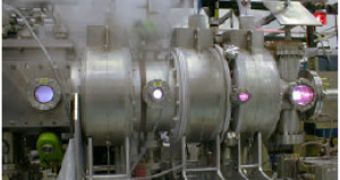Associate Administrator for Space Operations, William H. Gerstenmaier from NASA, and Dr. Franklin R. Chang Diaz, President and Chief Executive Officer of Ad Astra, a rocket company based in Webster, Texas, signed their third Space Act Agreement one week ago (on December 8th 2008), which could result in the installment of a test facility for the Variable Specific Impulse Magnetoplasma Rocket (VASIMR) engine at the International Space Station (ISS).
This is the third such agreement linked to the development of the VASIMR signed by the two parties since June 2005. The plasma-based propulsion engine technology was devised by NASA and was under commercial development at Ad Astra. When the device meets all the incremental requirements stipulated in the agreement, the experts hope it will successfully pass the last flight test conducted at the space station.
Until then, the novel flight engine has to pass a series of ground-based tests concerning the efficiency and performance of the thruster. The main goal of the initiative is to operate the privately-funded VASIMR VF-200 engine at maximal power levels of 200 kW in ten-minute long pulses. The energy required for the process will be drawn from the ISS' system. The parties involved hope it will serve as an implementation model for others interested in installing and conducting broader, more intricate externally-installed technological and scientific payloads.
This is going to be the first time a high-power, steady-state electric thruster propels a manned spacecraft, and the first time NASA collaborates to this extent with a private entity. Ad Astra officials are excited about the partnership and eager to start the project. The privately-owned corporation was founded almost four years ago, on January 14th 2005, with the purpose of marketing the technology of the plasma propulsion VASIMR engine designed by NASA.

 14 DAY TRIAL //
14 DAY TRIAL //